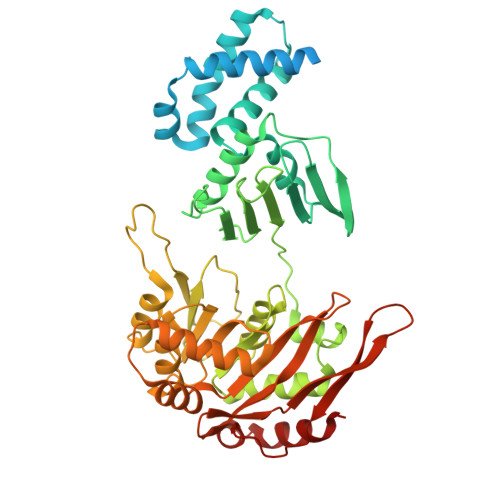Conformational changes in the motor ATPase CpaF facilitate a rotary mechanism of Tad pilus assembly.
Yen, I.Y., Whitfield, G.B., Rubinstein, J.L., Burrows, L.L., Brun, Y.V., Howell, P.L.(2025) Nat Commun 16: 3839-3839
- PubMed: 40268890
- DOI: https://doi.org/10.1038/s41467-025-59009-5
- Primary Citation of Related Structures:
9E24, 9E25, 9E26, 9E27, 9E29 - PubMed Abstract:
The type IV pilus family uses PilT/VirB11-like ATPases to rapidly assemble and disassemble pilin subunits. Among these, the tight adherence (Tad) pilus performs both functions using a single bifunctional ATPase, CpaF. Here, we determine three conformationally distinct structures of CpaF hexamers with varying nucleotide occupancies by cryo-electron microscopy. Analysis of these structures suggest ATP binding and hydrolysis expand and rotate the hexamer pore clockwise while subsequent ADP release contracts the ATPase. Truncation of the intrinsically disordered region of CpaF in Caulobacter crescentus equally reduces pilus extension and retraction events observed using fluorescence microscopy, but does not reduce ATPase activity. AlphaFold3 modeling suggests that CpaF and other motors of the type IV filament superfamily employ conserved secondary structural features to engage their respective platform proteins. From these data, we propose that CpaF uses a clockwise, rotary mechanism of catalysis to assemble a right-handed, helical Tad pilus, a process broadly applicable to other single motor systems.
- Program in Molecular Medicine, Peter Gilgan Center for Research and Learning, The Hospital for Sick Children, Toronto, ON, Canada.
Organizational Affiliation:



















